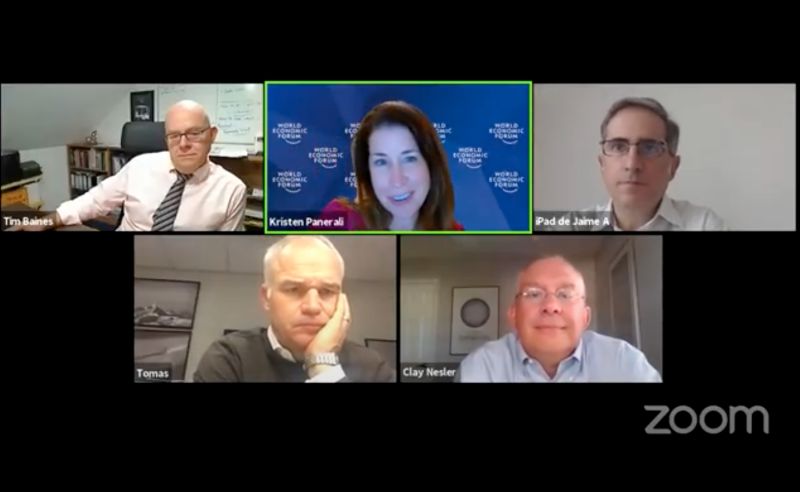Servitisation’s potential to disrupt the market beyond cooling

Servitisation can be applied to a wide variety of market sectors where it has the potential to completely disrupt the market. During the 1 December global CaaS E-Summit, the aim of one panel was to look at exactly that – a broader view of servitisation beyond just the cooling sector.
As panel moderator, Kristen Panerali of the World Economic Forum (WEF) explained how the WEF believes that by taking an integrated approach, it allows for solutions that tackle the reduction of emissions, whilst at the same time creating jobs and a much more equitable system. She explained that the challenge isn’t the lack of availability of sustainable technology, but rather the lack of finance and the barriers of policy and getting scale on new business models. “The servitisation business model is very interesting because it can be a really big contributor to this integrated energy approach for both buildings and city transportation,” she said as an introduction.
Heating-as-a-service shows great potential
Tomas Naucler, McKinsey spoke about the heating-as-a-service model in the industrial arena, allowing for an energy efficiency improvement as well as a cost efficiency improvement too. Naucler predicts that the 2020s will be the era of product-as-a-service models for sustainable development. “We will see it in the whole building space, including heating and cooling. We look forward to this business model being developed even faster.”
He explained that the five building blocks for a successful transition to products-as-a-service are: having the right product offering, the right price, creating differentiated offerings, migrating existing customers to the model, and promoting the new business model within your organisation and beyond.
CaaS enabling access to state-of-the-art solutions
Jaime Jimenez (Trane LATAM) shared experiences and lessons learnt with the Rent@Trane model. He explained how CaaS is aligned with Trane’s “Gigatonne” company challenge that is aimed at improving sustainability of the world. He showed how servitisation allows companies to resolve their cooling needs without having to invest the upfront capital in buying systems for permanent use. “This allows them to have state-of-the-art equipment but also the expertise, resources, and know-how that we as the experts in this industry can provide to them.”
Two of Trane’s main temporary, servitisation solutions include options for emergencies (perhaps in the case of a breakdown in a critical industry that cannot afford any downtime); as well as for seasonal (or supplemental) use. This solution allows the customer to prevent any downtime in the system, while also removing the barrier (and burden) of having to invest in equipment that isn’t required long-term.

Servitisation removes barriers to investment
Clay Nesler (Johnson Controls) shared their experience as a global air-conditioning manufacturing firm with as-a-service models. He shared data from a Johnson Controls survey (running for 13 years already and surveying 1,300 energy and facility executives from 10 countries), showing the top barriers into energy efficiency investments globally. CaaS addresses all four of these top barriers highlighted in the survey by providing third party-financing; guaranteed performance; the payback/ ROI is covered through the service fee and the cost savings over time; and the organisations installing the equipment has the technical expertise to design, install, operate and maintain the equipment.
“The good news is that energy-as-a-service models are increasing in attractiveness,” said Nesler, basing this on their survey data over the past few years. He then went on to share two hospital case studies, showing significant energy savings realised through JCI being able to optimise the central plant. “I think it’s a great idea and that the market is catching up to it,” Nesler concluded about CaaS.
Transforming businesses with servitisation
The final presentation was by Tim Baines, Aston University Business School professor and servitisation expert, who shared his research on how servitisation is transforming businesses. He shared various quick examples of companies providing servitisation around the world for a wide variety of applications. He explained that the shift to as-a-service models is happening everywhere, but not necessarily being recognised.
“The pandemic, to my mind, has really accelerated the forces that are shaping the industry in any way,” Baines said in his concluding remarks.
During the interactive Q&A, Panerali then raised a question about required regulatory measures as these weren’t brought up in the presentations. Naucler said that it is definitely needed and predicted that it will come in: “Without regulatory targets, we will see relatively slow development.” Baines agreed that legislation is key to bring about the innovation of the service model. “Regulation is a real enabler,” he said. He spoke about how this, coupled with financial innovation, can help accelerate the adoption.
Watch the recording
For more details on this topic, we highly encourage readers to view the recording of the panel and to read the article “What is Servitisation, and how it can help save the planet” and the paper “Net Zero Carbon Cities: An integrated Approach” where the WEF together with partners outlined how the right strategies, business models (such as servitisation) and policies can help accelerate the path to Net Zero.
View the panel discussion
To view this panel discussion and more, simply log back onto the E-Summit platform again. The digital platform will stay online as a virtual library for a whole year. Simply log back into the event and watch whichever session you choose. It is also possible to register post-event, so feel free to share the link with your colleagues and/or customers – new participants can use the code “CaaS!” to access the platform.
Read a highlights package of the entire CaaS E-Summit